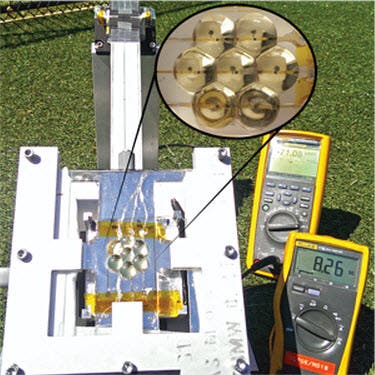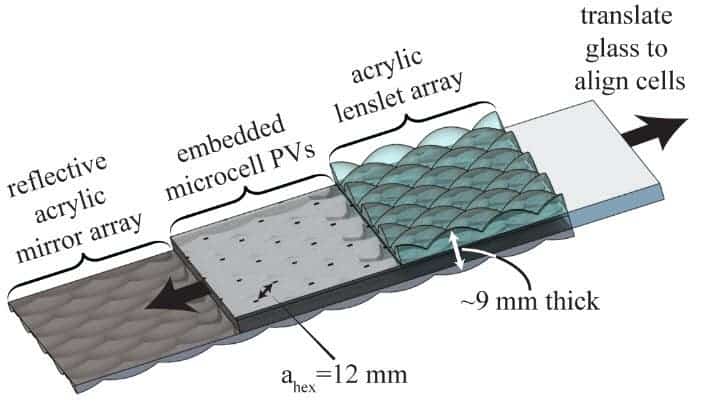The most efficient solar cells are those that convert incoming concentrated solar power via lenses, the sort you see on the International Space Station or in the sun-soaked Middle East where Shams 1, a 100 MW CSP plant – the largest in the world – operates, powering 20,000 United Arab Emirates homes. Because of their complex nature, concentrated solar power arrays have been mostly installed in open areas, but a team of engineers at Penn State are set to shift this paradigm. They’ve designed a translation motion micro-array that can concentrate solar power efficiently even in crowded areas, say on your rooftop.

Concentrated photovoltaics (CPV) are usually very bulky, so to make a rooftop affordable system the team combined miniaturized gallium-arsenide photovoltaic cells, 3D-printed plastic lens arrays, and a moveable focusing mechanism. This vastly reduced the size, cost and weight of the overall system, which is only 1cm thick. The tiny solar cells are embedded between a pair of plastic lenslet arrays. The lenslet atop act like a magnifying glass, focusing the solar energy, while the ones at the bottom behave like a concave mirror. This way, the duo lens array focuses solar light up to 200 times.
“The new CPV systems use inexpensive optics to concentrate sunlight,” said Noel C. Giebink, assistant professor of electrical engineering, Penn State. “Current CPV systems are the size of billboards and have to be pointed very accurately to track the sun throughout the day. You can’t put a system like this on your roof.”
“We partnered with colleagues at the University of Illinois because they are experts at making small, very efficient multi-junction solar cells,” said Giebink. “These cells are less than 1 square millimeter, made in large, parallel batches, and then an array of them is transferred onto a thin sheet of glass or plastic.”
[ALSO SEE] New solar power material converts 90% of incoming solar energy into heat
The sun’s position, however, isn’t fixed and constantly glides from east to west. Typically, CPV use a dual-axis system that constantly put the concentrating mirrors in motion, tracking the sun’s position. These are bulky, difficult to maintain and highly expensive. The researchers’ took a different approach by making the optics system fixed and the cells moving. To track the Sun over the course of a day, the middle solar cell sheet slides laterally in between the two lenslet arrays enabling efficient solar focusing for a full eight hour day.

“The vision is that such a microtracking CPV panel could be placed on a roof in the same space as a traditional solar panel and generate a lot more power,” said Giebink. “The simplicity of this solution is really what gives it practical value.”
The findings appeared in Nature Communications. [source: KurzweilAI]






